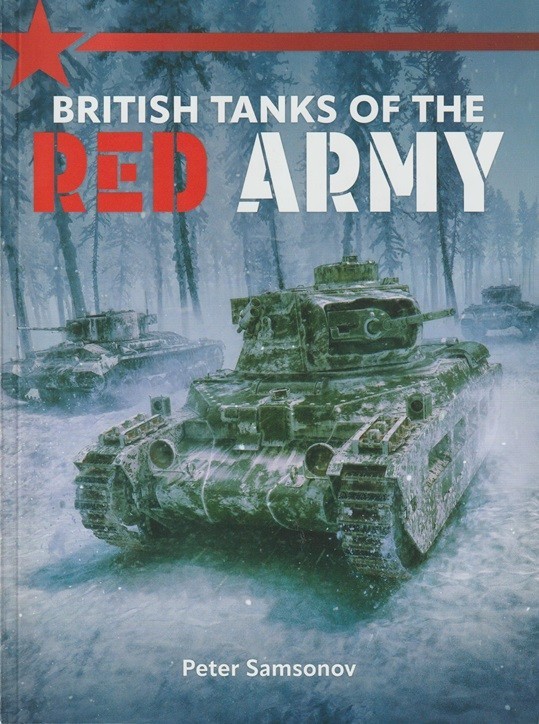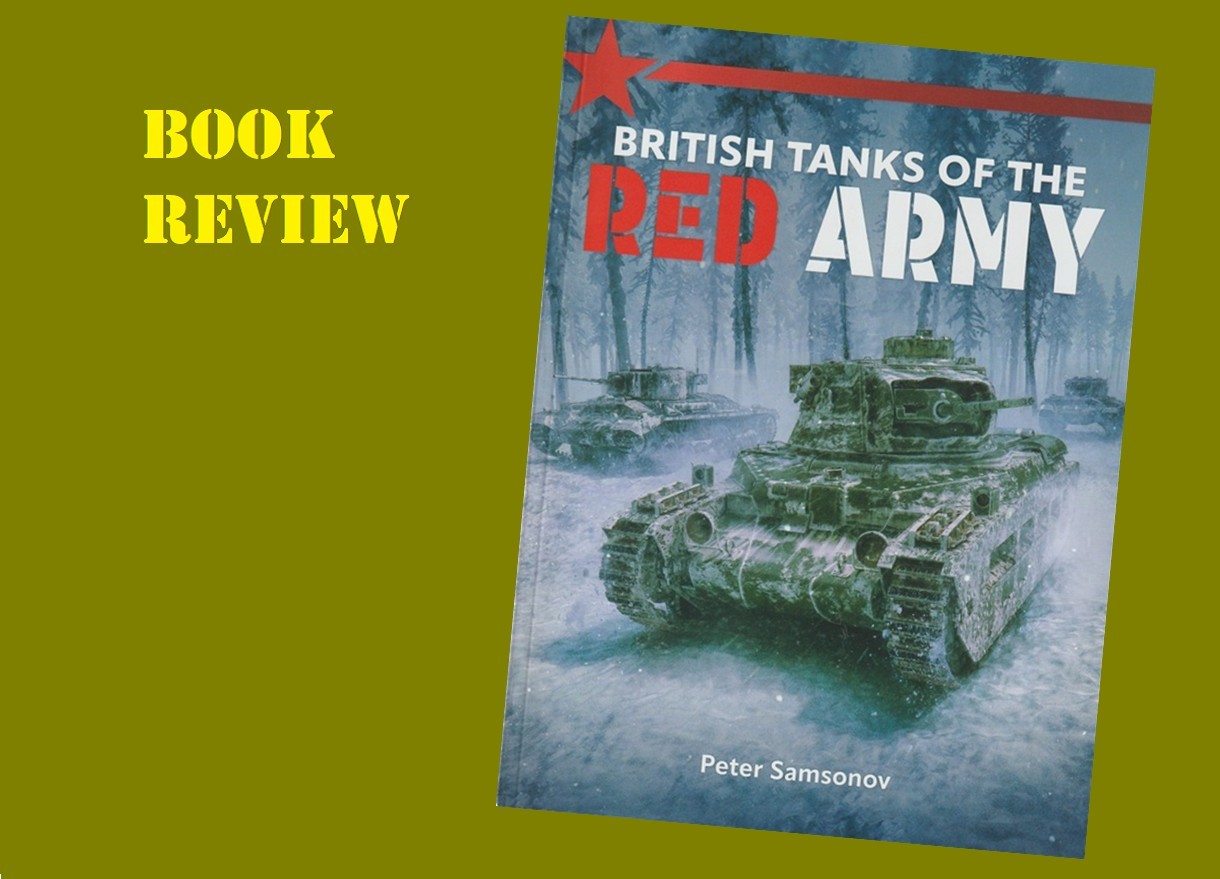
HISTORY:
** The first encounter between British armour and the Red Army was not on friendly terms – with the British sending surplus tanks to reinforce the pro-monarchy White Army in the Russian Civil War. When the Reds won, war trophy Mark V heavy tanks as well as medium Mk.A Whippets and Mk.B Hornets entered service with the RKKA. As the political landscape changed during the 1920s, the Red Army assessed British designs available for export and a licensed copy of the Vickers Mk.E entered production in 1931 as the T-26.
During the early days of the German invasion of the Soviet Union, armour losses were huge and the Red Army once again looked abroad to acquire new fighting vehicles. A large-scale programme of military aid to the USSR began in August 1941, with the US and Britain offering help under separate terms – though not for free. A deal was struck and Convoy PQ-1 with the first 20 British tanks for the Red Army left for Arkhangelsk on September 29, 1941. These tanks arrived in time to take place in the Battle of Moscow and as shipments continued, British armoured vehicles would remain in service with the Red Army until the conclusion of the Second World War nearly four years later.
A wide range of British vehicles served under the Red flag during the war – ranging from Matildas and Valentines to Churchills and even Tetrarch light tanks. In British Tanks of the Red Army, tank expert Peter Samsonov presents a history of British tanks in the Soviet Union and provides a detailed account of their use on the battlefield, including what the Red Army tankers thought of them. **
** Quoted from the back cover of the book.
THE BOOK:
Gallantry Books has released British Tanks of the Red Army, a 140-page softcover book, 7.25 x 9.75 inches in size. Included with the text are color photographs, color illustrations, maps and scale line-drawings. The book has a 2024 copyright, a publication date of September 12, 2024, and the ISBN is 978-1-9117-0406-5
CONTENTS:
Introduction
I. British Infantry tanks in Soviet Service
Infantry Tank Mk.II (Matilda)
Infantry Tank Mk.III (Valentine)
The First Generation: Valentine I, Valentine II, Valentine IV
Return of the Three-Man Turret: Valentine III and V
Canadian Valentines: Valentine VI, VII, and VIIA
Firepower Upgrade; Valentine IX and X
Soviet Upgrades
Infantry Tank Mk.IV (Churchill)
Churchill I-IV
Churchill Crocodile
Battle of Stalingrad
Battle of Kursk
Leningrad and Pskov Offensives
II. Matilda and Valentine Tanks in Combat
Battle of Moscow
Second Battle of Kharkov
Battle of Caucasus
Battle of Kursk
Operation Bagration
III. British Light Tanks and Cruisers in the USSR
Light Tank Mk.VII (Tetrarch)
Cruiser Tanks Mk.IV and Mk.VI
Cruiser Tank Mk.VIII (Cromwell)
IV. Conclusions
Profiles
Glossary
Endnotes
Index
THE TEXT:
Author Peter Samsonov provides a well written and informative text detailing various British manufactured tanks that were tested, ordered and fielded by the Soviet military during World War II. The text goes into very specific detail in all areas of the book as outlined on the contents page, please refer to the contents listing that I have provided for the subjects that are covered through the book. Peter Samsonov provides details such as the numbers and types of the various British tanks provided to the Soviet military, the testing of the tanks such as operating in different types of conditions and how they performed against different types of obstacles, the results of the tests and the upgrades and improvements made by the Soviets is discussed as well as a wealth of other information such as the names of the various tank manufacturers, the weapon types on each tank as well as the numbers of rounds of ammunition carried, the maximum effective range of the tank’s main weapon, the thickness of the tank’s armor, the amount of fuel that the tanks could carry, the operating distance of the tanks with the amount of fuel they carried as well as the lifespan of the various tanks between overhauls. Author Peter Samsonov also discusses how the Soviets determined which tanks worked best with what body size of Soviet military member. The Soviets determined the effective height that the crewmembers should be and determined how many crewmembers could fit in and work well in the turrets of the various tanks. In addition to the technical information, the author also discusses the battles the various tanks were used in by the Soviets. Details are provided on the actions of the tanks, the successes and failures of the tanks as well as the number of tanks lost in combat. Peter Samsonov doesn’t use what I refer to as fluff writing where a large amount of non-essential extra text is provided just to help fill the pages. As I read through the text, I didn’t notice any spelling or grammatical errors. Grammar and spelling might not be an important factor to everyone however it is something that I take notice of and pass on my findings. The reader will be well informed on the subject of British tanks in Soviet service during World War II.
THE PHOTOGRAPHS:
A total of 50 color photographs are featured in this publication. There are no black and white photographs featured. Author Peter Samsonov has used photographs in this volume that were taken by photographers Pierre-Olivier Buan and Pavel Borovikov. The photographs were taken at museums such as The Tank Museum at Bovington Camp in Dorset, South West England, Vadim Zadorozhniy Technical Museum in the village of Arkhangelsk in the Krasnogorsky District, Moscow Oblast, Patriot Park Museum in Kubinka, Russia the Canadian War Museum in Ottawa, Ontario, Canada, as well as some taken at TankFest 2023 in Dorset, England. Author Peter Samsonov provides subject specific photographs and did not include photographs that strayed from the main subject of the book. The photographs are current photographs, so therefore they are all clear and easily viewable. The majority of the photographs are wide angle photographs of the entire tank. However, there are also close-up detailed photographs of subjects such as gun barrels, smoke launchers, lights, armor plates, periscopes, running gear and tracks. No interior photographs of any of the tanks are provided. One thing I feel that I should mention is that there are no World War II period photographs included in the book. The majority, if not all, of the photographs will prove to be of great interest to the scale modeler or anyone interested in British manufactured tanks that were used by the Soviet military during World War II, due to the details they contain.
THE LINE-DRAWINGS:
There is a total of 12 line-drawings included that were taken from a World War II German military manual on engaging various British tanks. The drawings provide front, side and rear views of the tanks and aiming areas for anti-tank weapons.
The line-drawings are of the following tanks and the specific type of weapon being used against them.
Churchill III – 7.5cm KwK L/24
Churchill III – 5cm KwK 40
Churchill III – 7.5cm KwK 42 – mounted on the Panther tank.
Matilda – 3.7cm Pak
Valentine – Aiming areas when using a 37mm anti-tank gun with tungsten carbide shot.
Matilda – 5cm KwK 40 (See attached scan)
Matilda – 7.5cm KwK L/24 (See attached scan)
Matilda – 7.5cm Pak 40 anti-tank gun
Valentine – 5cm KwK 40
Valentine – 7.5cm KwK L/24 with HEAT Hl ammunition
Valentine – 7.5cm Pak 40
Valentine – Panther mounted 7.5cm KwK 42
THE ILLUSTRATIONS:
There are 8 color illustrations included in the volume by Thierry Vallet. The illustrations are all very well done, nicely detailed and are of:
Churchill III tank from the 49th Guards Heavy Tank Regiment, Leningrad, January 1943.
Experimental Matilda III tank equipped with a 76mm F-96 gun, December 1941.
Matilda III tank, Battle of Moscow, unknown unit, December 1941. (See attached scan)
Matilda III tank, 170th Independent tank Battalion, 3rd Shock Army, Kalinin Front, January 1943. (See attached scan)
Experimental Valentine II tank with a 45mm F-95 gun, December 1941.
Ceremonial Valentine tank celebrating the shipment of the first British tanks to the USSR.
Canadian-built Valentine VIIA tank, 5th Guards Tank Brigade, North Caucasus Front, summer 1942.
Valentine X tank, 3rd Battalion, 35th Guards Tank brigade, July 1944.
There are brief captions that accompany the illustrations that detail the specific model of tank show, the military unit to which it was assigned and the date. The illustrations will prove to be valuable to the scale tank modeler as well as anyone interested in British armor in use by the Soviet Union during World War II.
THE CAPTIONS:
The captions are well written and explain the accompanying photographs nicely. The captions go into very specific detail as to the specific model of tank show, which museum the tank is currently displayed at, numbers produced and delivered, the military unit to which they assigned, the specifics of what is being shown in the up-close detailed photographs, and other such information. As I read through the captions, I didn’t notice any spelling or grammatical errors. Peter Samsonov’s captions will prove to be very helpful to the reader due to their detailed content as opposed to captions that are very brief and lacking in detail.
THE MAPS:
There are a total of 13 color maps included in this volume that are accompanied by scale bars and detailed keys that point out specific unit locations as well as dates, movements and actions by both sides of each conflict.
- Battle of Stalingrad
- Battle of Kursk
- Battle of Kursk
- Leningrad and Pskov Offensives
- Leningrad and Pskov Offensives
- Battle of Moscow (See attached scan)
- Battle of Moscow
- Second Battle of Kharkov
- Battle of Voronezh
- Battle of the Caucasus
- Battle of Kursk
- Operation Bagration
- Operation Bagration
CONCLUSION:
This is the first title from Gallantry Books that I have reviewed, but I can say that I was impressed with this book. This is a very nice reference book that contains a well written informative text, many subject specific photographs, well detailed captions and more, all detailing British manufactured tanks that were used by the Soviet military during World War II. I would have no hesitation in recommending this book to others as it will be a welcome addition to one’s personal military reference library.
PRICE
UK £14.99 / US $25.00
https://www.casematepublishers.com/
This book, from Gallantry Books, was provided to me by Casemate Publishers. Please mention that you saw the book reviewed here on the KitMaker Network when making your purchase. Thank you.

